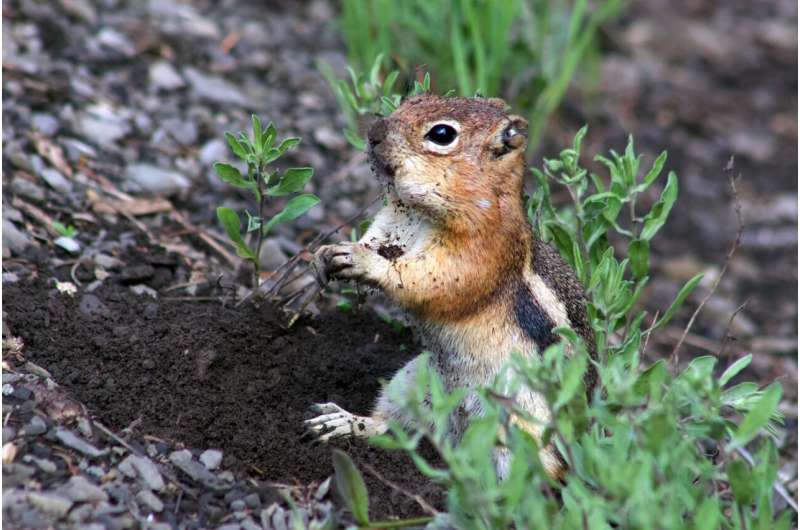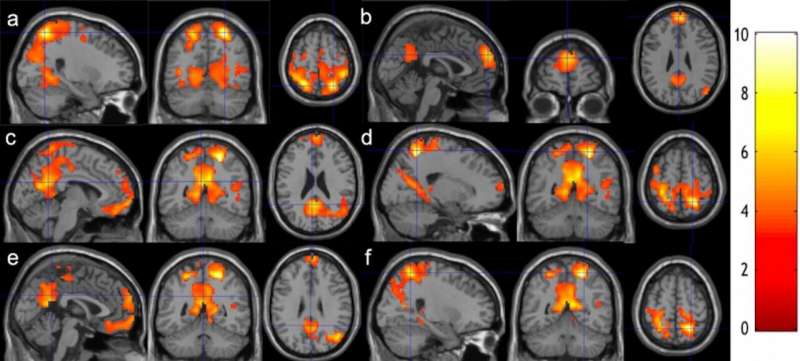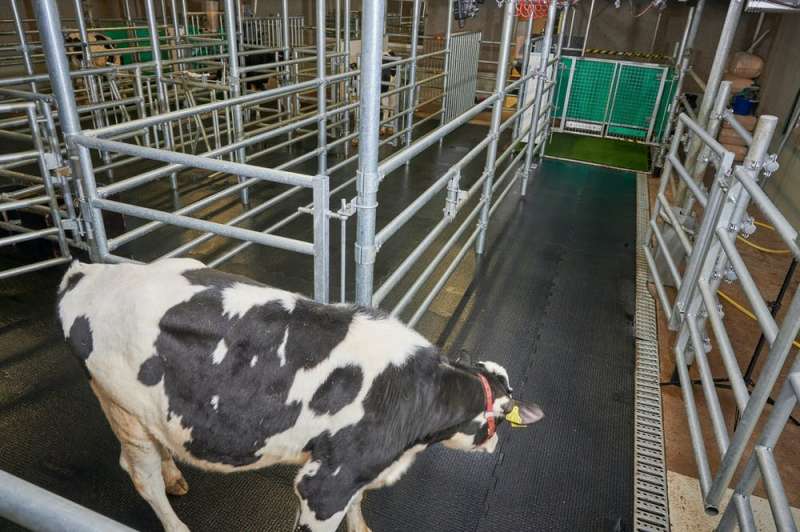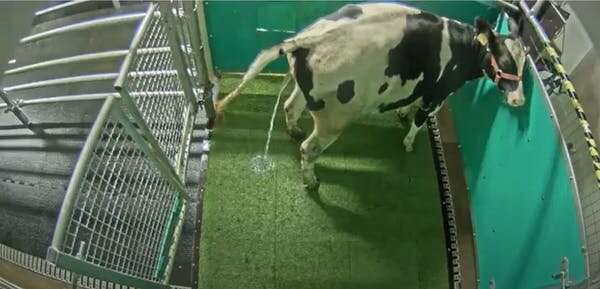I’ve been reading a lot about very cool and new technology throughout the fields of science and engineering and even the social sciences. I’ve been wondering when we will see some of these technologies pop up in our diabetes world. Who knows?
If you read something here and can envision an application for those of us living with Type 1 diabetes, I’d love to hear your suggestions and thoughts. Please share them in the comments below … and thanks for reading and stretching your imagination!
Personality matters, even for squirrels was published by UC Davis for Phys.org, 10 September 2021.
 Humans acknowledge that personality goes a long way, at least for our species. But scientists have been more hesitant to ascribe personality—defined as consistent behavior over time—to other animals. A study from the University of California, Davis is the first to document personality in golden-mantled ground squirrels, which are common across the western U.S. and parts of Canada. The study, published in the journal Animal Behaviour, found the squirrels show personality for four main traits: boldness, aggressiveness, activity level and sociability.
Humans acknowledge that personality goes a long way, at least for our species. But scientists have been more hesitant to ascribe personality—defined as consistent behavior over time—to other animals. A study from the University of California, Davis is the first to document personality in golden-mantled ground squirrels, which are common across the western U.S. and parts of Canada. The study, published in the journal Animal Behaviour, found the squirrels show personality for four main traits: boldness, aggressiveness, activity level and sociability.
‘Individuals matter’: To see them chitter and skitter, stop and then scurry, the fact that ground squirrels have personalities may not seem surprising. But the scientific field of animal personality is relatively young, as is the recognition that there are ecological consequences of animal personality. For instance, bolder, more aggressive squirrels may find more food or defend a larger territory, but their risky behavior may also make them vulnerable to predation or accidents.
“This adds to the small but growing number of studies showing that individuals matter,” said lead author Jaclyn Aliperti, who conducted the study while earning her Ph.D. in ecology at UC Davis. “Accounting for personality in wildlife management may be especially important when predicting wildlife responses to new conditions, such as changes or destruction of habitat due to human activity.”
The social squirrel’s advantage: Overall, the study found that bolder squirrels had larger core areas where they concentrated their activity. Bold, active squirrels moved faster. Also, squirrels that were bolder, more aggressive and more active had greater access to perches, such as rocks. Perch access is important because it can provide a better vantage point for seeing and evading predators. Interestingly, perch access was also associated with sociability.
I’m sure you can see some applications for T1Ds in how they navigate in and with the healthcare provider communities.
Read more: Personality matters, even for squirrels
Research shows just 8 weeks of meditation studies can make your brain quicker was reported by Chris Kocher of Binghampton University for MedicalExpress.com, 12 August 2021.
 A new study from Binghamton University’s Thomas J. Watson College of Engineering and Applied Science tracked how practicing meditation for just a couple of months changed the brain patterns of 10 students in the University’s Scholars Program.
A new study from Binghamton University’s Thomas J. Watson College of Engineering and Applied Science tracked how practicing meditation for just a couple of months changed the brain patterns of 10 students in the University’s Scholars Program.
The seed for the research came from a casual chat between Assistant Professor Weiying Dai and lecturer George Weinschenk, MA ’01, Ph.D. ’07, both from the Department of Computer Science. Weinschenk is a longtime meditation practitioner whose wife worked as an administrator at the Namgyal Monastery in Ithaca, which is the North American seat of the Dalai Lama’s personal monastery.
“I developed very close friendships with several of the monks,” he said. “We would hang out together, and I even received instruction from some of the Dalai Lama’s teachers. I took classes there, I read a lot and I earned a three-year certificate in Buddhist studies.”
Dai has studied brain mapping and biomedical image processing, and while earning her Ph.D. at the University of Pittsburgh, she tracked Alzheimer’s disease patients using magnetic resonance imaging (MRI) scans. “I’m interested in brain research to see how our brains are really functioning and how all different kinds of disease affect our brain,” she said. “I really have zero medical training, but I pick up all this knowledge or background from reading the literature and talking with the experts.”
The findings of the study demonstrate that meditation can enhance the brain connection among and within these two brain networks, indicating the effect of meditation on fast switching between the mind wandering and focusing its attention as well as maintaining attention once in the attentive state.
Read more: Meditation studies can make your brain quicker
Textiles that react to body gestures and glow in the dark was reported by Abigail Klein Leichman for Israel21c.org, 16 September 2021. Ganit Goldstein’s experimental embedded electronics and VR applications add new dimensions to textiles with the aim of making them more sustainable.
BUT, what if this color-changing textiles could indicate your current and trending blood sugars?
 “We all wear clothes, but what benefits can they give us more than just as a cover?” asks Israeli sustainable fashion designer Ganit Goldstein. “I believe that textiles could be much more functional than we imagine, as the process of making garments — pattern making, cutting, sewing — hasn’t changed for years.”
“We all wear clothes, but what benefits can they give us more than just as a cover?” asks Israeli sustainable fashion designer Ganit Goldstein. “I believe that textiles could be much more functional than we imagine, as the process of making garments — pattern making, cutting, sewing — hasn’t changed for years.”
Motivated to fill a gap she sees between the junction of art, science and industry, Goldstein created functional textiles for her master’s degree project at the Royal College of Art in London. In collaboration with Swiss textile company Saurer, which invented large-scale embroidery machinery, Goldstein developed a process for embedding electronics within the digital embroidery design. The result is a flower-patterned textile with an internal system of electronics. Using existing conductive and glow-in-the-dark yarns, Goldstein and the Saurer team developed a process of layering the electronics directly into the fabric.
READ MORE: Textiles that react to body gestures and glow in the dark
Toilet training cows could help combat climate change was written by Douglas Elliffe for Phys.org, 14 September 2021. The Questions: Can we toilet train cattle? Would we want to?
The answer to both of these questions is yes—and doing so could help us address issues of water contamination and climate change. Cattle urine is high in nitrogen, and this contributes to a range of environmental problems.
When cows are kept mainly outdoors, as they are in New Zealand and Australia, the nitrogen from their urine breaks down in the soil. This produces two problematic substances: nitrate and nitrous oxide. Nitrate from urine patches leaches into lakes, rivers and aquifers (underground pools of water contained by rock) where it pollutes the water and contributes to the excessive growth of weeds and algae. Nitrous oxide is a long-lasting greenhouse gas which is 300 times more potent than carbon dioxide. It accounts for about 12% of New Zealand’s greenhouse gas emissions, and much of this comes from the agricultural sector. When cows are kept mainly in barns, as is the case in Europe and North America, another polluting gas—ammonia—is produced when the nitrogen from urine mixes with feces on the barn floor.

 However, if some of the urine produced by cattle could be captured and treated, the nitrogen it contains could be diverted, and the environmental impacts reduced. But how might urine capture be achieved?
However, if some of the urine produced by cattle could be captured and treated, the nitrogen it contains could be diverted, and the environmental impacts reduced. But how might urine capture be achieved?
We worked on this problem with collaborators from Germany’s Federal Research Institute for Animal Health and Research Institute for Farm Animal Biology. Our research is published today in the journal Current Biology. It forms part of our colleague Neele Dirksen’s Ph.D. thesis.
In our research project, funded by the Volkswagen Foundation, we applied principles from behavioral psychology to train young cattle to urinate in a particular place—that is, to use the “toilet.” Behavioral psychology tells us a behavior is likely to be repeated if followed by a reward, or “reinforcer.” That’s how we train a dog to come when called. For our project we applied this idea in much the same way as for toilet training children, using a procedure called “backward chaining.”
This showed us two things that weren’t known before.
-
- Cattle can learn to attend to their own urination reflex, because they moved to the pen when ready to use it
- Cattle will learn to withhold urination until they’re in the right place, if they’re rewarded for doing so.
OK, I’m curious how you might come up with a way to apply this to diabetes research … but put on your caps!
Read more: Toilet training cows could help combat climate change


Do squirrels have a personality? Oh yeah, of course, they do. I have proof. I attended Indiana University. Home of the famous IU squirrel club. This is an official club at IU with campus support and plenty of funding, and I am an auxiliary member. I hope you enjoy the Squirrels of IU.
rick
https://www.youtube.com/watch?v=RQYi9Jw_6VA
https://www.youtube.com/watch?v=cFDgXMDpfqo
https://twitter.com/squirrels_at_iu?lang=en
https://www.facebook.com/sqrlsofiu/
https://tinyurl.com/7722xhz4
Thank you Rick, these are just wonderful and some hilarious links!!! GO HOOSIERS!!!